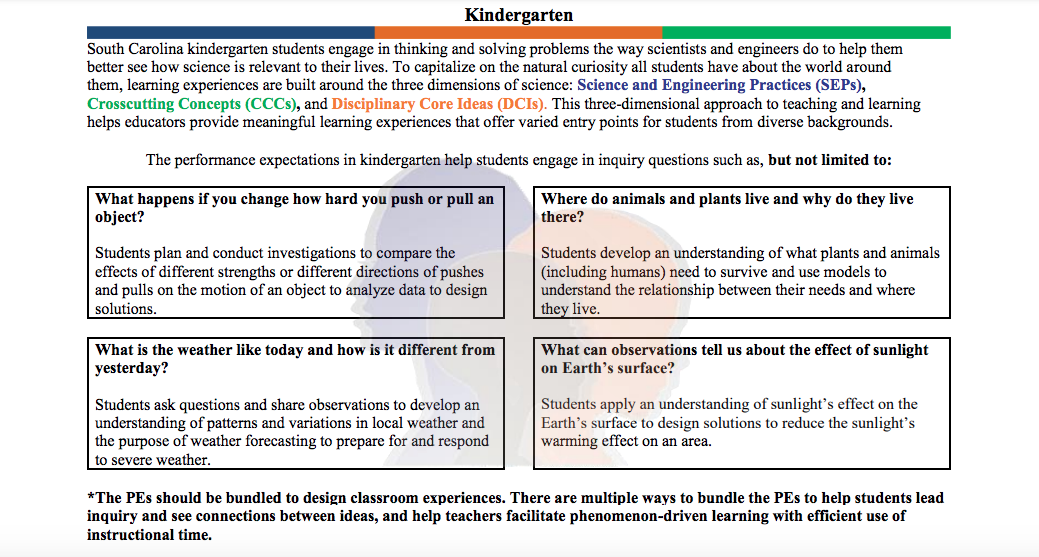5K Science At-A-Glance

|
Q1 - Scroll Below
|
Q2 - Click Here
|
Q3 - Click Here
|
Q4 - Click Here
|
Q1 At-A-Glance
Note to teacher: This unit is changing some from past years. As we taught the 2014 SC Science standards, we pulled K.L.2A.4 from the Q4 standards to teach the 5 Senses during Q1. This year, we are adding some SC Health standards to the Q1 content. Beginning 2022-23, we will teach the 5 Senses and major body parts during Q1. Please see details below.
Essential Knowledge
G-K.1.1 Name the major body parts.
G-K.1.2 Name the five senses and describe what they do.
G-K.1.3 Name ways children grow and change, mentally, emotionally, socially, and physically.
G-K.1.4 Explain how families are alike and different (e.g., several brothers and/or sisters; only one child; one parent working outside the home; a grandparent living in the home; pets or no pets).
There are five senses, each with specific parts of the body (sensory organs) responsible for each of the five senses. Eyes
● The sensory organs that see.
● They take in information (for example, shapes, colors, size or movements) about the world. Nose
● The sensory organ that smells odors and is a big part of why a person is able to taste things. Ears
● The sensory organs that collect sounds.
● The part of the ear that can be seen collects the sounds a person hears. There are other parts inside that help with hearing.
Tongue
● The sensory organ responsible for taste.
Skin
● The sensory organ that is responsible for the sense of touch (including
Essential Knowledge
G-K.1.1 Name the major body parts.
G-K.1.2 Name the five senses and describe what they do.
G-K.1.3 Name ways children grow and change, mentally, emotionally, socially, and physically.
G-K.1.4 Explain how families are alike and different (e.g., several brothers and/or sisters; only one child; one parent working outside the home; a grandparent living in the home; pets or no pets).
There are five senses, each with specific parts of the body (sensory organs) responsible for each of the five senses. Eyes
● The sensory organs that see.
● They take in information (for example, shapes, colors, size or movements) about the world. Nose
● The sensory organ that smells odors and is a big part of why a person is able to taste things. Ears
● The sensory organs that collect sounds.
● The part of the ear that can be seen collects the sounds a person hears. There are other parts inside that help with hearing.
Tongue
● The sensory organ responsible for taste.
Skin
● The sensory organ that is responsible for the sense of touch (including

